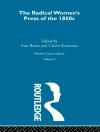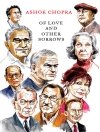On the Threshold of Eurasia explores the idea of the Russian and Soviet ‘East’ as a political, aesthetic, and scientific system of ideas that emerged through a series of intertextual encounters produced by Russians and Turkic Muslims on the imperial periphery amidst the revolutionary transition from 1905 to 1929. Identifying the role of Russian and Soviet Orientalism in shaping the formation of a specifically Eurasian imaginary, Leah Feldman examines connections between avant-garde literary works; Orientalist historical, geographic and linguistic texts; and political essays written by Russian and Azeri Turkic Muslim writers and thinkers.
Tracing these engagements and interactions between Russia and the Caucasus, Feldman offers an alternative vision of empire, modernity, and anti-imperialism from the vantage point not of the metropole but from the cosmopolitan centers at the edges of the Russian and later Soviet empires. In this way, On the Threshold of Eurasia illustrates the pivotal impact that the Caucasus (and the Soviet periphery more broadly) had—through the founding of an avant-garde poetics animated by Russian and Arabo-Persian precursors, Islamic metaphysics, and Marxist-Leninist theories of language —on the monumental aesthetic and political shifts of the early twentieth century.
Daftar Isi
Acknowledgments
Note on Transliteration
Introduction: Heterodoxy and Heterology on the Threshold of Eurasia
Part I.: Heterodoxy and Imperial Returns
1. Parodic and Messianic Genealogies: Reading Gogol in Azeri in the Late Imperial Caucasus
2. Aesthetics of Empathy: The Azeri Subject in Translations of Pushkin
Part II.: Heterology and Utopian Futures
3. A Window onto the East: Baku’s Avant-garde Poetics and the Translatio Imperii
4. Broken Verse: The Materiality of the Symbol in New Turkic Poetics
Postscript: Latinization and Refili’s ‘The Window’ onto Soviet Azerbaijan
Notes
References
Index
Tentang Penulis
Leah Feldman is Assistant Professor of Comparative Literature at the University of Chicago.












